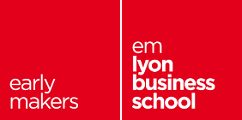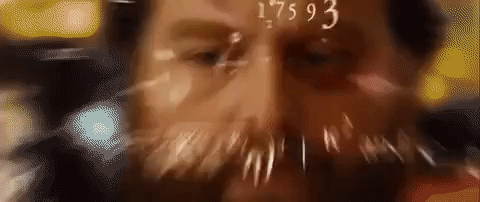CODAPPS
Essential vocabulary and preliminary notions
last modified: 2018-03-16

Clément Levallois
'Escape' or 'o' to see all sides, F11 for full screen, 's' for speaker notes
1. A note on components and actions
a. Components
A mobile app can include many things. These are like the Lego blocks of our app:
pictures
buttons to press
videos
places where the user is supposed to write text
a menu to navigate the app
etc.
Things included in an app are called Components |
b. Actions
And the app is also supposed to do many things, for example:
open a web page when the user clicks a button
change the picture when the user swaps left
zoom in when the user double taps on the screen
make Angry Bird fly when the user plays the game
etc…
All an app can "do", we will call these Actions |
2. The difficulty of naming things
When building software like mobile apps, it is important to give precise names to the tools we use.
Often, these names don’t make intuitive sense, and this creates an impression of technical difficulty:

It is not to be annoying, but to make sure we actually get the proper tool when we need it. Every domain of specialty, not just programmers, do this.
For instance:
we will design the screens of our first mobile application.
these screens, showing the content of our app, are not simply called "screen"… why?
Because
screenis a name already taken, to name the phone’s actual physical screen (the one that breaks when your phone falls on the ground)So, what name should be given instead to the area an app takes on the screen of the phone: "ScreenApp"? "Region"? "FullSizeAppRegion? EmptyScreenOfTheAppWhereToPutThings"? None of this.
→ The name chosen is Form.
A Form is the first Component we need when creating a mobile app. It is the empty region taking all the space of the phone’s screen, where we will draw the app (text, buttons, etc.) |
Because of this need for precise names, you will see that:
adding text to the app, we will use a Component named
Label(not Text)adding pictures to the app, we will use a different Components but none of them named Image!
adding buttons to the app, we will use a
ButtonComponent (this one is intuitive!)
3. Two approaches to work on mobile apps
To sum up what we have seen so far:
when we start designing an app, we need to create a
Formfirst.Then we will place Components in the Form: Buttons, Labels, etc.
Then we can attach actions to each of these components (a "click action" on a button, etc)
How will you do that in practice? Building a new mobile app is like building a new piece of furniture : you can build it yourself from scratch, or buy it at Ikea and just assemble it.
Codename One, the framewok we use, gives you these two options: Do It YourSelf (DYI) or Ikea.
DYI: write the code to create everything in the app.
IKEA: use a "Graphical User Interface" (GUI), which means we "draw" our app by click and point (a bit like in Photoshop), with a minimum of code to write.
There are different benefits to both approaches:
| Do It Yourself / writing code | Ikea approach / using a Graphical User Interface (GUI) | |
|---|---|---|
Benefits | Very flexible! You control every parameter since you write everything yourself | Quick and easy! You just drag and drop things, click and point with the mouse, no need to learn how to code. |
Inconvenients | You need to learn how to code. Slow since you write everything yourself. | You get stuck at some point: some features you need for you mobile app are too specific to be available. Writing code is going to be necessary. |
In the next lesson of this module, we are going how to see how to create a Form for our app, using the two methods alternatively: by writing code or by using the Graphical User Interface.
The end
Questions? Want to open a discussion on this lesson? Visit the forum here (need a free Github account).
Find references for this lesson, and other lessons, here.
Licence: Creative Commons, Attribution 4.0 International (CC BY 4.0). You are free to:
copy and redistribute the material in any medium or format
Adapt — remix, transform, and build upon the material
⇒ for any purpose, even commercially.
 This course is designed by Clement Levallois.
This course is designed by Clement Levallois.
Discover my other courses in data / tech for business: http://www.clementlevallois.net
Or get in touch via Twitter: @seinecle